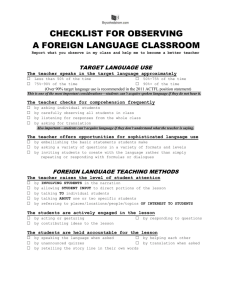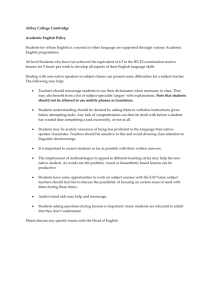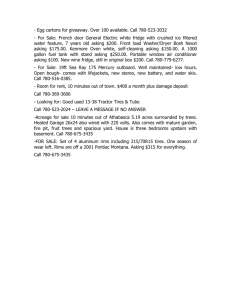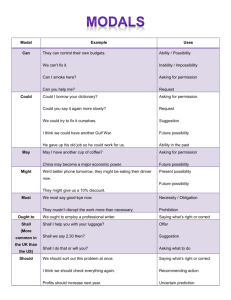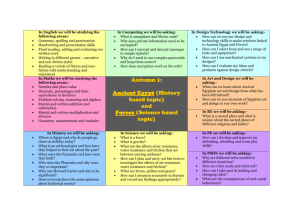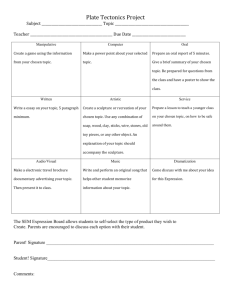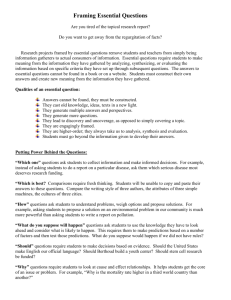Checklist for Observing a FL Classroom
advertisement
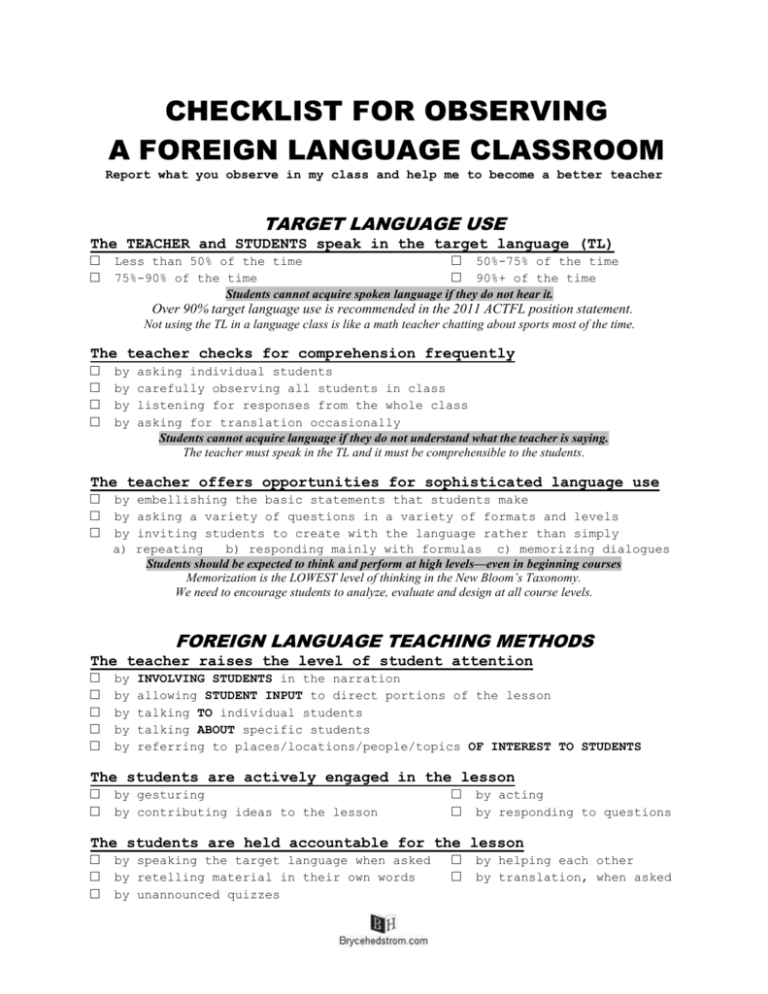
CHECKLIST FOR OBSERVING A FOREIGN LANGUAGE CLASSROOM Report what you observe in my class and help me to become a better teacher TARGET LANGUAGE USE The TEACHER and STUDENTS speak in the target language (TL) □ Less than 50% of the time □ 50%-75% of the time □ 75%-90% of the time □ 90%+ of the time Students cannot acquire spoken language if they do not hear it. Over 90% target language use is recommended in the 2011 ACTFL position statement. Not using the TL in a language class is like a math teacher chatting about sports most of the time. The teacher checks for comprehension frequently □ by asking individual students □ by carefully observing all students in class □ by listening for responses from the whole class □ by asking for translation occasionally Students cannot acquire language if they do not understand what the teacher is saying. The teacher must speak in the TL and it must be comprehensible to the students. The teacher offers opportunities for sophisticated language use □ by embellishing the basic statements that students make □ by asking a variety of questions in a variety of formats and levels □ by inviting students to create with the language rather than simply a) repeating b) responding mainly with formulas c) memorizing dialogues Students should be expected to think and perform at high levels—even in beginning courses Memorization is the LOWEST level of thinking in the New Bloom’s Taxonomy. We need to encourage students to analyze, evaluate and design at all course levels. FOREIGN LANGUAGE TEACHING METHODS The teacher raises the level of student attention □ by INVOLVING STUDENTS in the narration □ by allowing STUDENT INPUT to direct portions of the lesson □ by talking TO individual students □ by talking ABOUT specific students □ by referring to places/locations/people/topics OF INTEREST TO STUDENTS The students are actively engaged in the lesson □ by gesturing □ by acting □ by contributing ideas to the lesson □ by responding to questions The students are held accountable for the lesson □ by speaking the target language when asked □ by helping each other □ by retelling material in their own words □ by translation, when asked □ by unannounced quizzes The teacher promotes grammatical accuracy □ by briefly explaining the meaning of unfamiliar or new items □ by using the unfamiliar or new items multiple times & in different contexts □ by asking students to predict correct grammatical usage □ by requiring increased accuracy as students progress The teacher demonstrates appropriate correction techniques □ by modeling accuracy: Rewarding the student's attempts while acknowledging □ □ the content of the student's statement by demonstrating the value of accuracy: Stating the meaning of the inaccurate construction by inviting the student to correct him/herself The teacher promotes □ by asking students to □ by asking students to □ by asking students to higher-level thinking skills synthesize the language in a story retell create imaginative situations supply motivation for actions in the story The teacher tailors the tasks to individual student ability □ by asking many types and levels of questions □ by expecting multiple levels of answers to questions □ (one-word, short phrase, complete sentence, extended discourse) by requiring longer, more detailed, and more accurate narration from the most able students CLASSROOM MANAGEMENT TECHNIQUES There seems to be a routine to begin the class □ teacher greets students as they arrive □ students arrive on time □ students are on task □ students are prepared □ students are working by the time the late bell rings The teacher models proactive classroom management □ by showing genuine interest in the students □ by remaining calm and in control □ by taking the time to listen to student suggestions □ by looking at individual students with a calm demeanor □ by moving closer to potential disruptions □ by using body language to control student behavior non-verbally □ by using facial expressions that are appropriate to the situation □ (smiling, not angry, blank expression, etc.) by offering choices to students who fail to co-operate There seems to be a routine to end the class □ students are not waiting by the door to leave class □ students are working and/or attentive until the bell rings □ students are not packing up 5 minutes before the end of class □ students wait to be dismissed by the teacher, not the bell Adapted by Bryce Hedstrom. Original by Susan Gross. Used by permission
